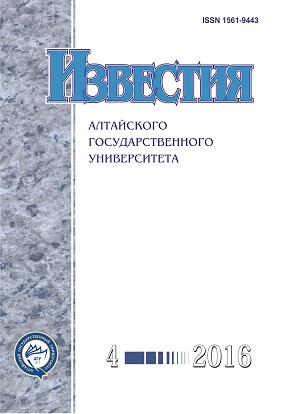China and Mongolia: Historical, Political and Psychological Aspects of Mutual Relations
Abstract
Mongolian vector is among the most significant directions of the Chinese geopolitics affecting a range of historical, political, economic, psychological, ethno- cultural aspects in foreign and domestic political realms. There is also a range of quite sensitive issues affecting not only the Chinese-Mongolian relations, but also the geopolitics of the People’s Republic of China in general. The eff iciency of Chinese policy in terms of developing of mutually beneficial cooperation in a number of regions and countries, especially in Central Asia, to a certain extent depends on the policy pursued by Beijing in relation with Mongolia. Among the most interesting aspects of the Chinese — Mongolian relations of great interest is the strategy used by these countries differing by their military, political, economic and demographic potentials, to maintain balanced and good neighborly relations with each other. The basis of Beijing’s policy towards Mongolia is the well- known strategy of “soft power”. The main strategy of Ulaanbaatar can be classified as “rough weakness” the essence of which is to make use of v ulnerabilities so that the implementation of the power politics from the more powerful neighbors became inexpedient. The relations between these two states prove that these diametrically opposite strategies can effectively balance each other. Studying the China- Mongolian relations is very much expedient also within the context of comprehending various patterns of peaceful coexistence of a great power and a weak neighbor in general. DOI 10.14258/izvasu(2016)4-31Downloads
Metrics
References
Wagner Allen. Mongolia: Growth, Democracy, and Two Wary Neighbors. An Interview with Alan Wachman // The National Bureau of Asian Research. - [Electronic resource]. - URL: http://www.nbr.org/research/activity. aspx?id=245 (дата обращения: 03.05.2012).
“U.S. and Mongolia Sign Joint Vision Statement // Embassy of the USA to Mongolia. - [Electronic resource]. - URL: http://mongolia.usembassy.gov/pr_041014. html (дата обращения: 10.042012).
Великодержавная политика маоистов в национальных районах КНР / Институт Дальнего Востока Академии наук СССР. - М., 1975.
Sneath David. The Impact of the Cultural Revolution in China on the Mongolians of Inner Mongolia // Modern Asian Studies. - 1994. - Vol. 28. - № 2.
Minahan James. Encyclopedia of the Stateless Nations. Ethnic and National Groups Around the World. Vol. IV. - Westport, Connecticut, L., 2002.
Inner Mongolia Autonomous Region Bureau of Statistics. - [Electronic resource]. - URL: http://www.nmgt). gov.cn/Html/gzdt/2011-5/23/1152309433324071.shtml, (дата обращения: 17.05.2011).
Бурятия в цифрах - 2015 : статистический сборник / Территориальный орган Федеральной службы государственной статистики по Республике Бурятия. - Улан-Уде, 2015.
Кузьмин С. Договор 1913 г. между Монголией и Тибетом: новые данные // Восток. - 2011. - № 4.
Snow Edgar. Red Star over China. - N.Y., 1938.
Atwood Christopher, Sino-Soviet Diplomacy and the Second Partition of Mongolia, 1945-1946 // Mongolia in the Twentieth Century. Landlocked Cosmopolitan / edited by Kotkin Stephen and Bruce A. Elleman. - N.Y., 1999.
Бабаян Д.К. Политика Китая в Центральной Азии, на Кавказе и в Северном Прикаспии в конце XX - начале XXI вв. - М., 2013.
Izvestiya of Altai State University is a golden publisher, as we allow self-archiving, but most importantly we are fully transparent about your rights.
Authors may present and discuss their findings ahead of publication: at biological or scientific conferences, on preprint servers, in public databases, and in blogs, wikis, tweets, and other informal communication channels.
Izvestiya of Altai State University allows authors to deposit manuscripts (currently under review or those for intended submission to Izvestiya of Altai State University) in non-commercial, pre-print servers such as ArXiv.
Authors who publish with this journal agree to the following terms:
- Authors retain copyright and grant the journal right of first publication with the work simultaneously licensed under a Creative Commons Attribution License (CC BY 4.0) that allows others to share the work with an acknowledgement of the work's authorship and initial publication in this journal.
- Authors are able to enter into separate, additional contractual arrangements for the non-exclusive distribution of the journal's published version of the work (e.g., post it to an institutional repository or publish it in a book), with an acknowledgement of its initial publication in this journal.
- Authors are permitted and encouraged to post their work online (e.g., in institutional repositories or on their website) prior to and during the submission process, as it can lead to productive exchanges, as well as earlier and greater citation of published work (See The Effect of Open Access).








